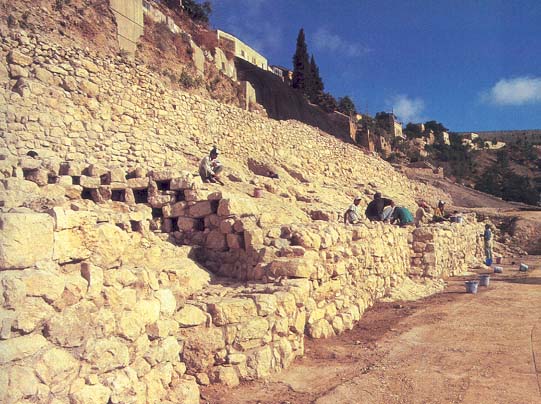Image Details

Israel Antiquities Authority
As the city expanded to the north and west, new fortifications sometimes followed the line of this earliest wall in places. The small, tightly packed stones at upper left belong to the wall that fortified Hasmonean Jerusalem (141–37 B.C.E.). Erroneously dubbed the “First Wall” by Josephus, this structure followed the line of the earliest wall south around the City of David, then ran west across the Tyropoeon Valley, encompassed the southern half of Mount Zion, turned east at Jaffa Gate and encircled the Temple Mount. The Hasmonean ruler Simon Maccabee, the Bible relates, “hurried on the completion of the walls of Jerusaelm until it was fortified on all sides” (1 Maccabees 13:10). The Israel Antiquities Authority is preserving these various city walls, dating from the Middle Bronze Age through the Second Temple period, as the centerpiece of an archaeological park in the City of David.
